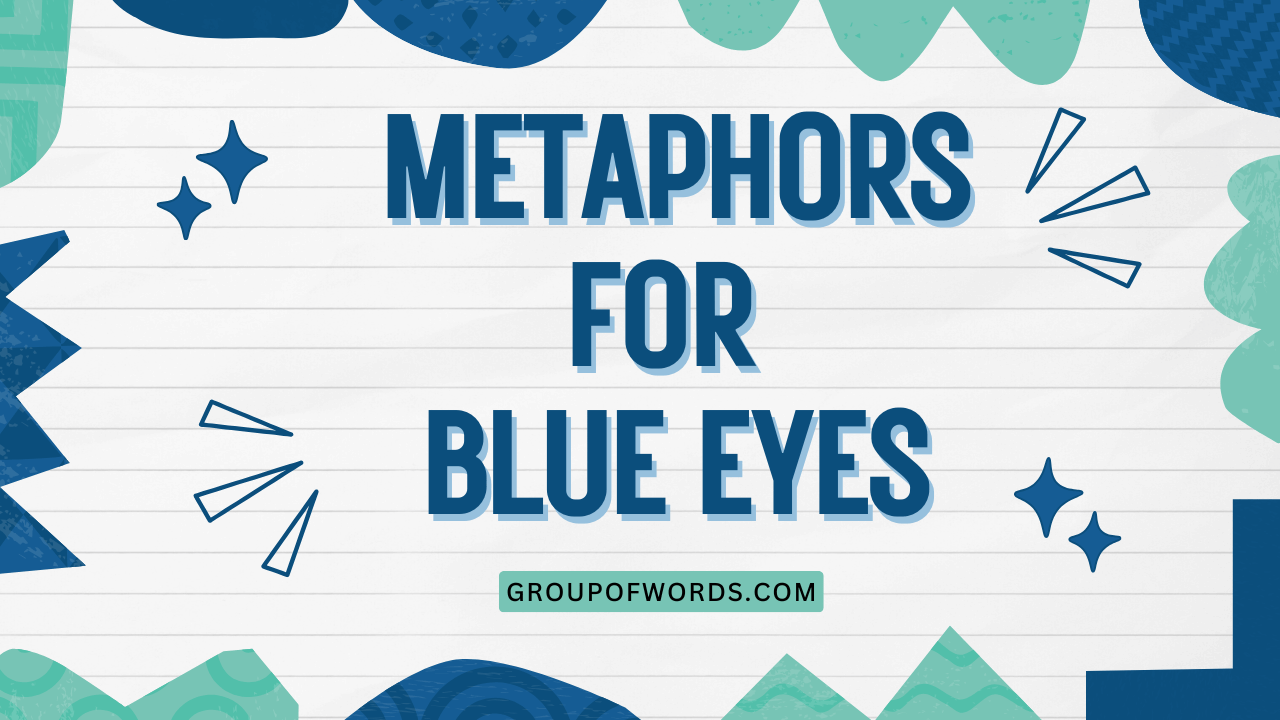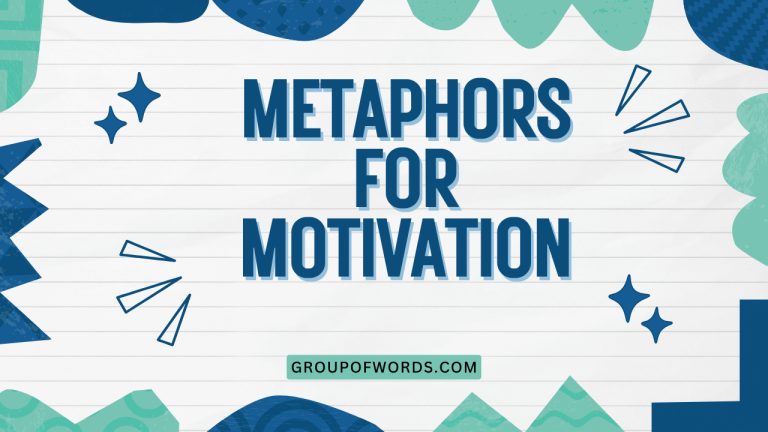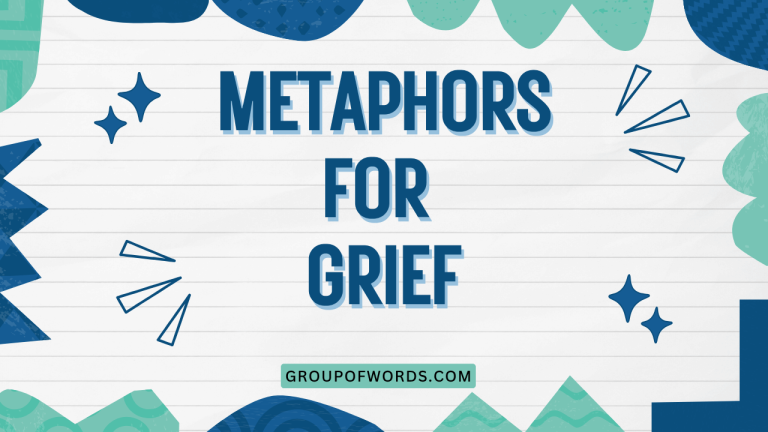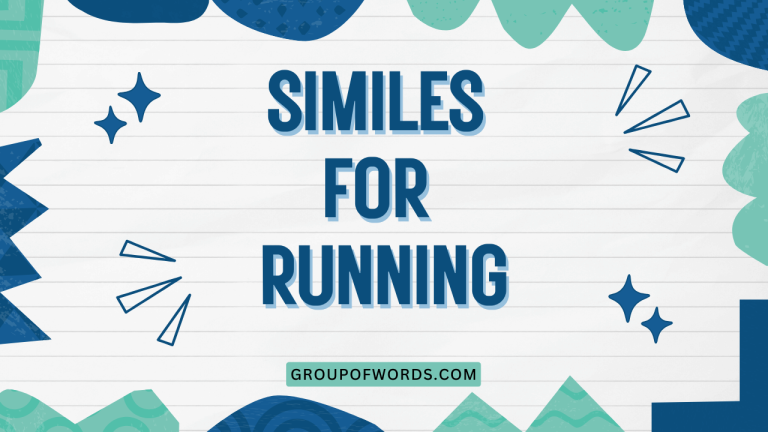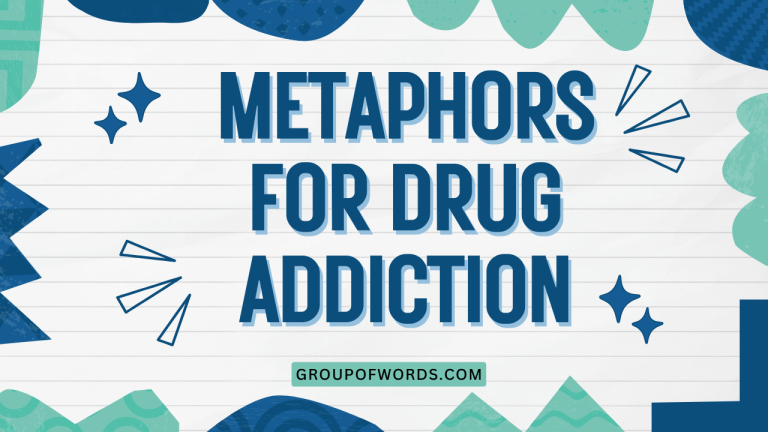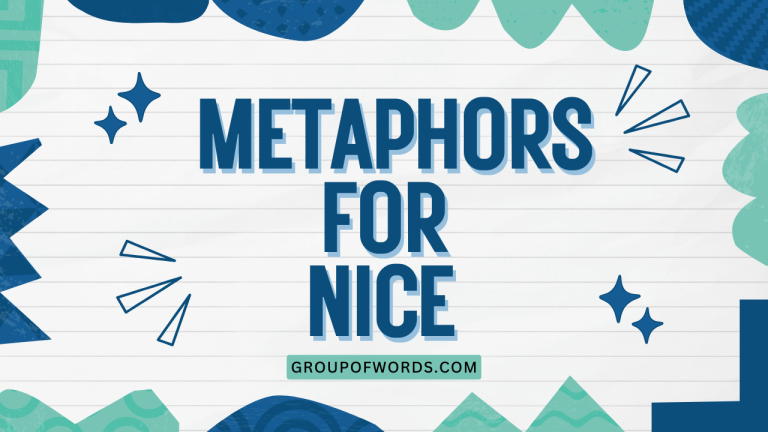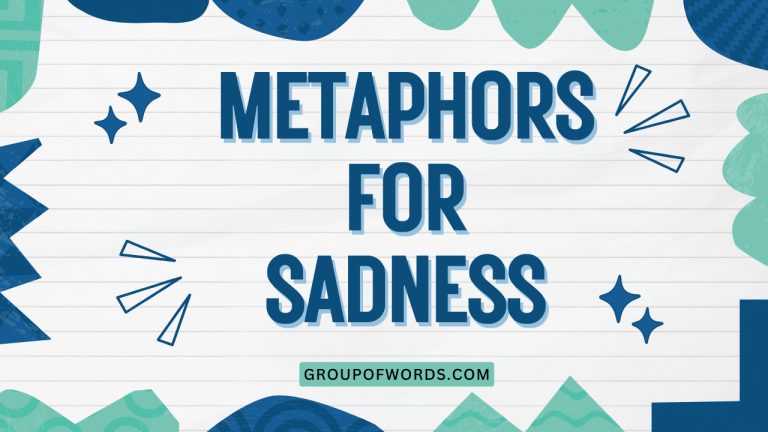Metaphors for Blue Eyes: A Grammar Guide
Metaphors are powerful tools in the English language, allowing us to convey complex ideas and vivid imagery by comparing one thing to another. When it comes to describing physical features, such as eye color, metaphors can transform simple descriptions into captivating prose.
Understanding how metaphors work, especially in the context of describing blue eyes, enhances both our writing and comprehension skills. This article delves into the world of metaphors for blue eyes, exploring their structure, types, and usage.
It is beneficial for students, writers, and anyone looking to enrich their understanding and use of the English language.
This comprehensive guide will provide you with a thorough understanding of metaphors for blue eyes, complete with examples, usage rules, and practice exercises. By the end of this article, you’ll be able to identify, interpret, and create your own compelling metaphors to describe blue eyes.
Table of Contents
- Introduction
- Definition of Metaphor
- Structural Breakdown of Metaphors
- Types of Metaphors for Blue Eyes
- Examples of Metaphors for Blue Eyes
- Usage Rules for Metaphors
- Common Mistakes with Metaphors
- Practice Exercises
- Advanced Topics
- Frequently Asked Questions
- Conclusion
Definition of Metaphor
What is a Metaphor?
A metaphor is a figure of speech that directly compares two unrelated things, asserting that they are the same or have similar qualities. Unlike similes, which use “like” or “as” to make a comparison, metaphors create a direct equation.
The purpose of a metaphor is to enhance understanding or create a vivid image by transferring qualities from one thing to another. For example, saying “Her eyes were sapphires” doesn’t mean her eyes were literally gemstones, but it suggests they had a similar deep blue color and perhaps a certain brilliance.
Classification of Metaphors
Metaphors can be classified in several ways, including:
- Standard Metaphors: These are direct comparisons, such as “He is a lion in battle.”
- Implied Metaphors: These suggest a comparison without explicitly stating it, like “She roared at her opponent,” implying she is like a lion.
- Mixed Metaphors: These combine two or more inconsistent metaphors, often unintentionally creating a humorous or confusing effect. For example, “Let’s iron out the wrinkles while nipping it in the bud.”
- Dead Metaphors: These are metaphors that have become so common that they are no longer recognized as figures of speech, such as “the heart of the matter.”
Function of Metaphors
Metaphors serve several functions in language and literature:
- Enhancing Imagery: Metaphors create vivid images in the reader’s mind, making descriptions more engaging and memorable.
- Simplifying Complex Ideas: By comparing something abstract or complex to something concrete and familiar, metaphors can make it easier to understand.
- Adding Emotional Resonance: Metaphors can evoke emotions and create a deeper connection between the writer and the reader.
- Providing New Perspectives: Metaphors offer fresh ways of looking at things, challenging assumptions and revealing hidden similarities.
Context of Metaphors
The effectiveness of a metaphor depends heavily on its context. A metaphor that works well in one situation may be confusing or inappropriate in another.
Factors to consider include:
- Audience: The target audience’s knowledge, experiences, and cultural background will influence how they interpret a metaphor.
- Purpose: The writer’s purpose (e.g., to inform, persuade, entertain) will shape the choice of metaphors.
- Tone: The overall tone of the writing (e.g., serious, humorous, sarcastic) should be consistent with the metaphors used.
- Genre: Different genres (e.g., poetry, fiction, scientific writing) have different conventions regarding the use of metaphors.
Structural Breakdown of Metaphors
Tenor and Vehicle
In a metaphor, the **tenor** is the subject being described, and the **vehicle** is the object or concept to which the tenor is compared. For example, in the metaphor “Her eyes were sapphires,” the tenor is “her eyes,” and the vehicle is “sapphires.” The vehicle lends its qualities to the tenor, creating a more vivid and evocative description.
Understanding this distinction helps in analyzing and crafting effective metaphors.
Ground
The **ground** is the shared characteristic or similarity between the tenor and the vehicle. It is the basis for the comparison.
In the example “Her eyes were sapphires,” the ground is the deep blue color and the brilliance that both eyes and sapphires can possess. Identifying the ground is crucial for ensuring that the metaphor is logical and meaningful.
A strong ground makes the metaphor more effective and easier to understand.
Implied Metaphor
An implied metaphor is a more subtle form of metaphor that does not explicitly state the comparison. Instead, it suggests the comparison through the use of verbs or adjectives that evoke the qualities of the vehicle.
For example, instead of saying “He was a lion,” an implied metaphor might say “He roared his disapproval.” The comparison to a lion is implied through the action of roaring. Implied metaphors can add depth and complexity to writing, but they also require careful crafting to ensure that the comparison is clear.
Types of Metaphors for Blue Eyes
Nature Metaphors
Nature metaphors compare blue eyes to elements of the natural world. These metaphors often evoke feelings of tranquility, beauty, and vastness.
Examples include comparing blue eyes to the sky, the ocean, or a clear mountain lake. The effectiveness of nature metaphors lies in their ability to connect the subject with the inherent beauty and serenity of the natural world.
These metaphors are particularly effective in creating a sense of peace and wonder.
Elemental Metaphors
Elemental metaphors focus on the basic elements of nature, such as water, ice, and air. These metaphors can highlight the purity, clarity, or coldness of blue eyes.
For example, comparing blue eyes to glacial ice might suggest a cold, piercing gaze, while comparing them to a clear spring might evoke a sense of freshness and vitality. The choice of element can significantly alter the emotional impact of the metaphor.
Emotional Metaphors
Emotional metaphors associate blue eyes with specific emotions or states of mind. These metaphors can convey the depth and complexity of a person’s inner life.
For example, comparing blue eyes to pools of sorrow might suggest a deep sadness, while comparing them to sparks of joy might indicate happiness and excitement. Emotional metaphors add a layer of psychological depth to the description.
Object Metaphors
Object metaphors compare blue eyes to man-made objects that share a similar color or quality. These can range from precious stones like sapphires or aquamarines to everyday items like blue glass or porcelain.
The choice of object can convey different impressions, from elegance and refinement to simplicity and fragility. Object metaphors offer a concrete and tangible way to describe the color and texture of blue eyes.
Abstract Metaphors
Abstract metaphors link blue eyes to abstract concepts or ideas, such as truth, clarity, or infinity. These metaphors can be more challenging to create and interpret, but they can also be highly effective in conveying profound meanings.
For example, comparing blue eyes to windows into the soul suggests that they reveal a person’s innermost thoughts and feelings. Abstract metaphors elevate the description to a more philosophical level.
Examples of Metaphors for Blue Eyes
The following tables provide extensive examples of metaphors for blue eyes, organized by category. Each table includes a variety of examples to illustrate the different ways in which metaphors can be used to describe blue eyes.
Nature-Based Metaphors
Nature-based metaphors are some of the most common and evocative ways to describe blue eyes. They draw on the inherent beauty and tranquility of the natural world to create vivid and memorable images.
The following table provides a range of examples, each highlighting different aspects of nature.
| Metaphor | Explanation |
|---|---|
| Her eyes were a summer sky, endlessly blue. | Evokes a sense of vastness and serenity. |
| His eyes were twin mountain lakes, reflecting the clear sky above. | Suggests clarity, depth, and reflection. |
| Her gaze was like the deep ocean, mysterious and unfathomable. | Implies a sense of mystery and hidden depths. |
| His eyes held the blue of a robin’s egg, delicate and pure. | Conveys a sense of fragility and innocence. |
| Her eyes were like a field of bluebells, vibrant and enchanting. | Suggests vibrancy, beauty, and enchantment. |
| His eyes mirrored the clear, cerulean sky after a spring rain. | Implies freshness, clarity, and renewal. |
| Her eyes were the color of a twilight sky, fading into the night. | Evokes a sense of mystery and transition. |
| His eyes were like a calm sea, reflecting the horizon’s gentle hues. | Suggests calmness, peace, and tranquility. |
| Her eyes held the blue of a forget-me-not, small but memorable. | Conveys a sense of remembrance and affection. |
| His eyes were as blue as the glaciers of Alaska, cold and majestic. | Implies coldness, majesty, and grandeur. |
| Her eyes were a canvas of cerulean, painted by nature’s hand. | Suggests artistry and natural beauty. |
| His eyes were like the deep fjords of Norway, profound and serene. | Implies depth, serenity, and a sense of mystery. |
| Her eyes sparkled like the turquoise waters of a tropical lagoon. | Conveys vibrancy, clarity, and exotic beauty. |
| His eyes held the serene blue of a high-altitude alpine lake. | Suggests peace, purity, and a sense of elevation. |
| Her eyes were like the vast expanse of the Arctic sky, endless and cold. | Implies vastness, coldness, and a sense of isolation. |
| His eyes reflected the deep blue of a sapphire mine, hidden and precious. | Conveys preciousness, rarity, and hidden beauty. |
| Her eyes were as blue as the summer sky over Provence, clear and inviting. | Suggests clarity, warmth, and invitation. |
| His eyes resembled the tranquil blue of a Mediterranean cove. | Implies tranquility, warmth, and a sense of escape. |
| Her eyes were a window to a serene blue landscape, untouched by time. | Conveys timelessness, serenity, and natural beauty. |
| His eyes shone with the crisp blue of a winter morning sky. | Suggests clarity, coldness, and a fresh start. |
| Her eyes held the blue of a distant mountain range, mysterious and alluring. | Implies mystery, allure, and a sense of adventure. |
| His eyes resembled the deep blue of a twilight forest, enchanting and deep. | Conveys enchantment, depth, and a sense of wonder. |
| Her eyes were as blue as the open sky, promising endless possibilities. | Suggests potential, freedom, and optimism. |
| His eyes held the tranquil blue of a hidden lagoon, serene and undisturbed. | Implies tranquility, seclusion, and a sense of peace. |
| Her eyes were the colour of the summer sky, filled with endless possibilities. | Suggests boundlessness and optimism. |
Elemental Metaphors
Elemental metaphors focus on the basic elements of nature to describe blue eyes. These metaphors can highlight the purity, clarity, or coldness of the eyes.
The following table provides a range of examples, each emphasizing different elemental qualities.
| Metaphor | Explanation |
|---|---|
| Her eyes were glacial ice, sharp and unyielding. | Suggests coldness, sharpness, and inflexibility. |
| His eyes were like a clear spring, pure and refreshing. | Implies purity, clarity, and invigoration. |
| Her eyes held the blue of deep water, still and silent. | Conveys stillness, silence, and depth. |
| His eyes were like a breath of fresh air, invigorating and clear. | Suggests invigoration, clarity, and renewal. |
| Her eyes were the color of liquid sky, flowing and boundless. | Implies boundlessness, fluidity, and freedom. |
| His eyes were like frozen fire, a paradoxical blend of cold and passion. | Conveys a sense of inner conflict and intensity. |
| Her eyes held the blue of a winter wind, biting and sharp. | Suggests sharpness, coldness, and intensity. |
| His eyes were as blue as melted snow, pure and pristine. | Implies purity, cleanliness, and freshness. |
| Her eyes resembled a pool of deep water, reflecting the secrets below. | Conveys mystery, depth, and hidden knowledge. |
| His eyes were the blue of ionized air, crackling with energy. | Suggests energy, intensity, and a dynamic presence. |
| Her eyes held the serene blue of a tranquil sea, calm and deep. | Implies serenity, calmness, and depth. |
| His eyes were as blue as the heart of a flame, intense and captivating. | Suggests intensity, passion, and captivation. |
| Her eyes shone with the deep blue of a subterranean spring, hidden and pure. | Conveys purity, hidden beauty, and a sense of mystery. |
| His eyes were like liquid sapphire, flowing with ethereal light. | Implies elegance, preciousness, and a radiant quality. |
| Her eyes held the chilling blue of a blizzard, fierce and unforgiving. | Suggests intensity, relentlessness, and a formidable nature. |
| His eyes were as blue as a cascading waterfall, powerful and refreshing. | Implies power, invigoration, and a sense of renewal. |
| Her eyes held the serene blue of a still pond, reflective and peaceful. | Conveys peace, reflection, and a sense of tranquility. |
| His eyes were as blue as an iceberg, majestic and formidable. | Suggests majesty, power, and a sense of awe. |
| Her eyes sparkled with the blue of a geyser’s spray, energetic and alive. | Implies energy, vibrancy, and a lively spirit. |
| His eyes were the blue of a deep ocean trench, mysterious and profound. | Conveys mystery, depth, and a sense of the unknown. |
| Her eyes shone with the blue of a mountain stream, pure and untamed. | Suggests purity, wildness, and a free spirit. |
| His eyes held the tranquil blue of a desert oasis, refreshing and rare. | Implies refreshment, rarity, and a sense of hope. |
| Her eyes were as blue as a rain-washed sky, clear and revitalizing. | Conveys clarity, invigoration, and a sense of renewal. |
| His eyes resembled the deep blue of a volcanic lake, intense and brooding. | Suggests intensity, brooding, and a hint of danger. |
Emotional Metaphors
Emotional metaphors associate blue eyes with specific emotions or states of mind. These metaphors can convey the depth and complexity of a person’s inner life.
The following table provides a range of examples, each highlighting different emotional qualities.
| Metaphor | Explanation |
|---|---|
| Her eyes were pools of sorrow, reflecting a deep sadness. | Suggests sadness, grief, and emotional depth. |
| His eyes were sparks of joy, radiating happiness and excitement. | Implies happiness, excitement, and a positive outlook. |
| Her eyes held the blue of longing, yearning for something lost. | Conveys longing, yearning, and a sense of loss. |
| His eyes were a sea of tranquility, reflecting inner peace. | Suggests peace, calmness, and inner harmony. |
| Her eyes held the blue of quiet contemplation, reflecting deep thought. | Implies thoughtfulness, reflection, and introspection. |
| His eyes were like chips of ice, reflecting a cold indifference. | Conveys coldness, indifference, and emotional detachment. |
| Her eyes shone with the blue of determination, unwavering and resolute. | Suggests determination, resolve, and a strong will. |
| His eyes mirrored a sky of hope, promising brighter days ahead. | Implies hope, optimism, and a positive future. |
| Her eyes were the blue of inner peace, a serene and calming presence. | Conveys peace, serenity, and a calming effect. |
| His eyes reflected a deep well of courage, unwavering in the face of adversity. | Suggests courage, strength, and resilience. |
| Her eyes held the blue of quiet resilience, showing strength through hardship. | Implies resilience, strength, and perseverance. |
| His eyes shone with the blue of pure mischief, hinting at playful intentions. | Conveys mischief, playfulness, and a lighthearted nature. |
| Her eyes were the blue of deep empathy, reflecting a profound understanding. | Suggests empathy, understanding, and compassion. |
| His eyes mirrored the blue of unwavering loyalty, steadfast and true. | Implies loyalty, steadfastness, and unwavering commitment. |
| Her eyes held the blue of deep wisdom, reflecting years of experience. | Conveys wisdom, experience, and insight. |
| His eyes were as blue as the sky during a moment of pure joy, radiant and bright. | Suggests joy, radiance, and pure happiness. |
| Her eyes held the blue of quiet contentment, reflecting a peaceful heart. | Implies contentment, peace, and inner satisfaction. |
| His eyes shone with the blue of undeniable passion, intense and fiery. | Conveys passion, intensity, and a fiery spirit. |
| Her eyes were the blue of serene acceptance, reflecting a calm understanding. | Suggests acceptance, serenity, and a calm demeanor. |
| His eyes mirrored the blue of steadfast resolve, unwavering in their purpose. | Implies resolve, purpose, and unwavering commitment. |
| Her eyes held the blue of hopeful anticipation, reflecting a bright future. | Conveys anticipation, hope, and a positive outlook. |
| His eyes shone with the blue of unwavering trust, steadfast and true. | Suggests trust, steadfastness, and unwavering faith. |
Object Metaphors
Object metaphors compare blue eyes to man-made objects that share a similar color or quality. These can range from precious stones to everyday items.
The following table provides a variety of examples, each highlighting different object-related qualities.
| Metaphor | Explanation |
|---|---|
| Her eyes were sapphires, sparkling with gem-like brilliance. | Suggests brilliance, preciousness, and elegance. |
| His eyes were like blue glass, clear and unyielding. | Implies clarity, rigidity, and transparency. |
| Her eyes held the blue of porcelain, delicate and fragile. | Conveys delicacy, fragility, and refinement. |
| His eyes were as blue as faded denim, worn and comfortable. | Suggests comfort, familiarity, and a sense of ease. |
| Her eyes were the color of a clear blue marble, smooth and captivating. | Implies smoothness, captivation, and a sense of wonder. |
| His eyes were like polished lapis lazuli, deep and mysterious. | Conveys mystery, depth, and a sense of antiquity. |
| Her eyes were as blue as the glaze on a vintage ceramic vase, refined and unique. | Suggests refinement, uniqueness, and a touch of history. |
| His eyes resembled the blue of a well-cut aquamarine, clear and captivating. | Implies clarity, captivation, and a sense of sophistication. |
| Her eyes were the blue of a freshly painted sky-blue wall, vibrant and inviting. | Conveys vibrancy, invitation, and a sense of newness. |
| His eyes mirrored the blue of a classic car’s finish, smooth and timeless. | Suggests timelessness, smoothness, and a classic appeal. |
| Her eyes were the blue of a clear stained-glass window, illuminating and radiant. | Implies illumination, radiance, and a sense of spirituality. |
| His eyes were as blue as a perfectly crafted ceramic tile, precise and refined. | Conveys precision, refinement, and a sense of craftsmanship. |
| Her eyes reflected the blue of a vintage enamel pin, charming and nostalgic. | Suggests charm, nostalgia, and a sense of history. |
| His eyes were as blue as a flawless azure gemstone, precious and rare. | Implies preciousness, rarity, and exceptional beauty. |
| Her eyes were the color of a sea-glass fragment, weathered and unique. | Conveys uniqueness, resilience, and a sense of history. |
| His eyes mirrored the deep blue of a polished obsidian stone, intense and mysterious. | Suggests intensity, mystery, and a sense of hidden depths. |
| Her eyes were as blue as a piece of fine china, delicate and precious. | Implies delicacy, preciousness, and a sense of refinement. |
| His eyes were the blue of a well-worn leather journal, comforting and familiar. | Conveys comfort, familiarity, and a sense of history. |
| Her eyes reflected the blue of a modern art sculpture, unique and captivating. | Suggests uniqueness, captivation, and a contemporary appeal. |
| His eyes were as blue as a clear vinyl record, transparent and timeless. | Implies transparency, timelessness, and a sense of nostalgia. |
| Her eyes had the blue of a vintage map, promising adventure and discovery. | Conveys adventure, discovery, and a historical charm. |
Abstract Metaphors
Abstract metaphors link blue eyes to abstract concepts or ideas, such as truth, clarity, or infinity. These metaphors can be more challenging to create and interpret, but they can also be highly effective in conveying profound meanings.
The following table provides a range of examples, each highlighting different abstract qualities.
| Metaphor | Explanation |
|---|---|
| Her eyes were windows to the soul, revealing her innermost thoughts. | Suggests transparency, depth, and emotional honesty. |
| His eyes held the blue of truth, unwavering and clear. | Implies honesty, clarity, and integrity. |
| Her eyes were a reflection of infinity, boundless and deep. | Conveys boundlessness, depth, and a sense of the eternal. |
| His eyes held the blue of clarity, cutting through the fog of confusion. | Suggests clarity, understanding, and insight. |
| Her eyes were a gateway to serenity, offering a moment of peace. | Implies peace, tranquility, and a sense of escape. |
| His eyes held the blue of unwavering faith, steadfast and true. | Conveys faith, steadfastness, and unwavering belief. |
| Her eyes were a canvas of dreams, painted with hopes and aspirations. | Suggests dreams, hopes, and aspirations. |
| His eyes mirrored the blue of pure potential, promising endless possibilities. | Implies potential, possibility, and a bright future. |
| Her eyes were a mirror reflecting the blue of profound understanding. | Conveys understanding, reflection, and insight. |
| His eyes held the blue of quiet wisdom, reflecting years of experience and learning. | Suggests wisdom, experience, and knowledge. |
| Her eyes were a portal to tranquility, offering a serene escape from chaos. | Implies tranquility, escape, and a sense of calm. |
| His eyes shone with the blue of unbreakable resolve, unwavering in their purpose. | Conveys resolve, purpose, and unwavering commitment. |
| Her eyes were a beacon of hope, shining brightly in the darkness. | Suggests hope, guidance, and a positive outlook. |
| His eyes mirrored the blue of unwavering dedication, steadfast and committed. | Implies dedication, commitment, and unwavering focus. |
| Her eyes were a window to endless possibilities, full of promise and potential. | Conveys possibility, potential, and a sense of opportunity. |
| His eyes held the blue of deep introspection, reflecting profound self-awareness. | Suggests introspection, self-awareness, and reflection. |
| Her eyes were a pool of boundless empathy, reflecting a deep understanding of others. | Implies empathy, understanding, and compassion. |
| His eyes shone with the blue of unwavering integrity, steadfast and honorable. | Conveys integrity, honor, and unwavering principles. |
| Her eyes were a mirror reflecting the blue of pure inspiration, fueling creativity and innovation. | Suggests inspiration, creativity, and innovation. |
| His eyes held the blue of relentless curiosity, driving a thirst for knowledge and discovery. | Implies curiosity, knowledge, and a desire for discovery. |
Usage Rules for Metaphors
Clarity and Relevance
A good metaphor should be clear and relevant to the subject being described. The comparison should be easily understood and should enhance the reader’s understanding or appreciation of the subject.
Avoid metaphors that are too obscure or far-fetched, as they can confuse or distract the reader. The connection between the tenor and the vehicle should be logical and meaningful.
Avoiding Cliches
Cliches are overused metaphors that have lost their impact and originality. Examples include “eyes like the sky” or “eyes like sapphires.” While these metaphors may be technically correct, they lack freshness and creativity.
Strive to create original metaphors that offer a new perspective on the subject. A unique metaphor will make your writing more engaging and memorable.
Maintaining Consistency
When using metaphors, it is important to maintain consistency in tone and imagery. Avoid mixing metaphors that create conflicting or contradictory images.
For example, “Her eyes were a stormy sea, yet they also sparkled like diamonds” is inconsistent because the imagery of a stormy sea clashes with the imagery of sparkling diamonds. Choose metaphors that create a unified and coherent impression.
Common Mistakes with Metaphors
Mixed Metaphors
A mixed metaphor combines two or more inconsistent metaphors, often unintentionally creating a humorous or confusing effect. For example, “Let’s grab the bull by the horns and nip it in the bud” combines the metaphor of seizing an opportunity with the metaphor of stopping something early, resulting in a nonsensical image.
Avoid mixed metaphors by carefully considering the images and associations that your metaphors evoke.
Incorrect: “We need to nip this problem in the bud before it snowballs out of control.”
Correct: “We need to address this problem early before it escalates.”
Overused Metaphors
Overused metaphors, also known as cliches, are metaphors that have become so common that they have lost their impact and originality. Examples include “eyes like the ocean” or “a heart of gold.” While these metaphors may be easily understood, they lack freshness and creativity.
Strive to create original metaphors that offer a new perspective on the subject.
Overused: “Her eyes were as blue as the sky.”
Better: “Her eyes were a canvas of cerulean, painted by nature’s hand.”
Inappropriate Metaphors
An inappropriate metaphor is one that is unsuitable for the context or audience. This could be because the metaphor is offensive, insensitive, or simply doesn’t make sense in the given situation.
For example, comparing someone’s eyes to something unpleasant or negative would be inappropriate. Choose metaphors that are respectful, relevant, and appropriate for the intended audience.
Inappropriate: “Her eyes were like stagnant pools of water.”
Better: “Her eyes were like tranquil pools of water, reflecting inner peace.”
Practice Exercises
Exercise 1: Identifying Metaphors
Identify the metaphors in the following sentences and explain what is being compared.
- Her eyes were sapphires, sparkling in the sunlight.
- His gaze was a glacial stare, cold and unyielding.
- Her eyes were windows to a serene and tranquil soul.
- His eyes were the colour of the summer sky, filled with endless possibilities.
- Her eyes were like pools of sorrow, reflecting a deep sadness.
Exercise 2: Creating Metaphors
Create your own metaphors to describe blue eyes, using the following prompts:
- Describe blue eyes using a nature-based metaphor.
- Describe blue eyes using an elemental metaphor.
- Describe blue eyes using an emotional metaphor.
- Describe blue eyes using an object metaphor.
- Describe blue eyes using an abstract metaphor.
Exercise 3: Correcting Metaphors
Identify and correct the mistakes in the following metaphors:
- Her eyes were a stormy sea, yet calm and peaceful. (Inconsistent imagery)
- His eyes were as blue as the sky. (Overused metaphor)
- Her eyes were like murky swamps. (Inappropriate metaphor)
- Let’s grab the problem by the horns and nip it in the bud. (Mixed metaphor)
- His eyes were a bottomless pit of despair, shining brightly. (Conflicting imagery)
Advanced Topics
Extended Metaphors
An extended metaphor is a metaphor that is developed over several lines or even throughout an entire work. It allows for a more complex and nuanced comparison, exploring multiple aspects of the relationship between the tenor and the vehicle.
Extended metaphors can add depth and richness to writing, creating a more immersive and engaging experience for the reader.
Conceits
A conceit is an elaborate and often surprising metaphor that forms the basis of a poem or other work of literature. Conceits are typically more intellectual and complex than ordinary metaphors, often drawing on obscure or unexpected comparisons.
They were particularly popular in metaphysical poetry of the 17th century, where poets like John Donne used conceits to explore profound philosophical and religious themes.
Symbolism and Metaphor
Symbolism is the use of objects, people, or ideas to represent something else. Metaphors and symbols are closely related, as both involve representing one thing in terms of another.
However, symbols typically have a broader and more established meaning than metaphors. A metaphor may introduce a new or unexpected comparison, while a symbol often draws on existing cultural or literary associations.
Understanding the relationship between symbolism and metaphor can enhance your ability to interpret and create meaningful and evocative writing.
Frequently Asked Questions
What is the difference between a metaphor and a simile?
A metaphor directly compares two unrelated things, stating that they are the same or have similar qualities. A simile, on the other hand, uses “like” or “as” to make a comparison.
For example, “Her eyes were sapphires” is a metaphor, while “Her eyes were as blue as sapphires” is a simile.
How can I avoid using cliches in my metaphors?
To avoid using cliches, strive to create original and unexpected comparisons. Think about the unique qualities of the subject you are describing and look for less obvious ways to connect them to other objects or concepts.
Read widely and pay attention to the metaphors used by other writers to get inspiration.
What makes a metaphor effective?
An effective metaphor is clear, relevant, and original. It should enhance the reader’s understanding or appreciation of the subject by creating a vivid and meaningful comparison.
The connection between the tenor and the vehicle should be logical and should evoke the desired emotions or associations.
Can a metaphor be too complex?
Yes, a metaphor can be too complex if it is difficult to understand or if it distracts from the main point of the writing. A good metaphor should enhance clarity, not obscure it.
If a metaphor requires too much explanation or if it confuses the reader, it may be better to choose a simpler and more direct comparison.
How do I identify the tenor and vehicle in a metaphor?
The tenor is the subject being described, and the vehicle is the object or concept to which the tenor is compared. For example, in the metaphor “Her eyes were sapphires,” the tenor is “her eyes,” and the vehicle is “sapphires.” The vehicle lends its qualities to the tenor, creating a more vivid and evocative description.
Conclusion
Metaphors are powerful tools for enhancing descriptions and conveying complex ideas. By understanding the structure, types, and usage rules of metaphors, you can create vivid and memorable images that resonate with your audience.
When describing blue eyes, the possibilities are endless, from nature-based comparisons to abstract concepts. However, it’s important to avoid common mistakes like mixed metaphors and cliches, and to maintain consistency in tone and imagery.
With practice and attention to detail, you can master the art of crafting compelling metaphors and elevate your writing to a new level.
